Bloemfontein
Visit the guide

Botshabelo
Visit the guide
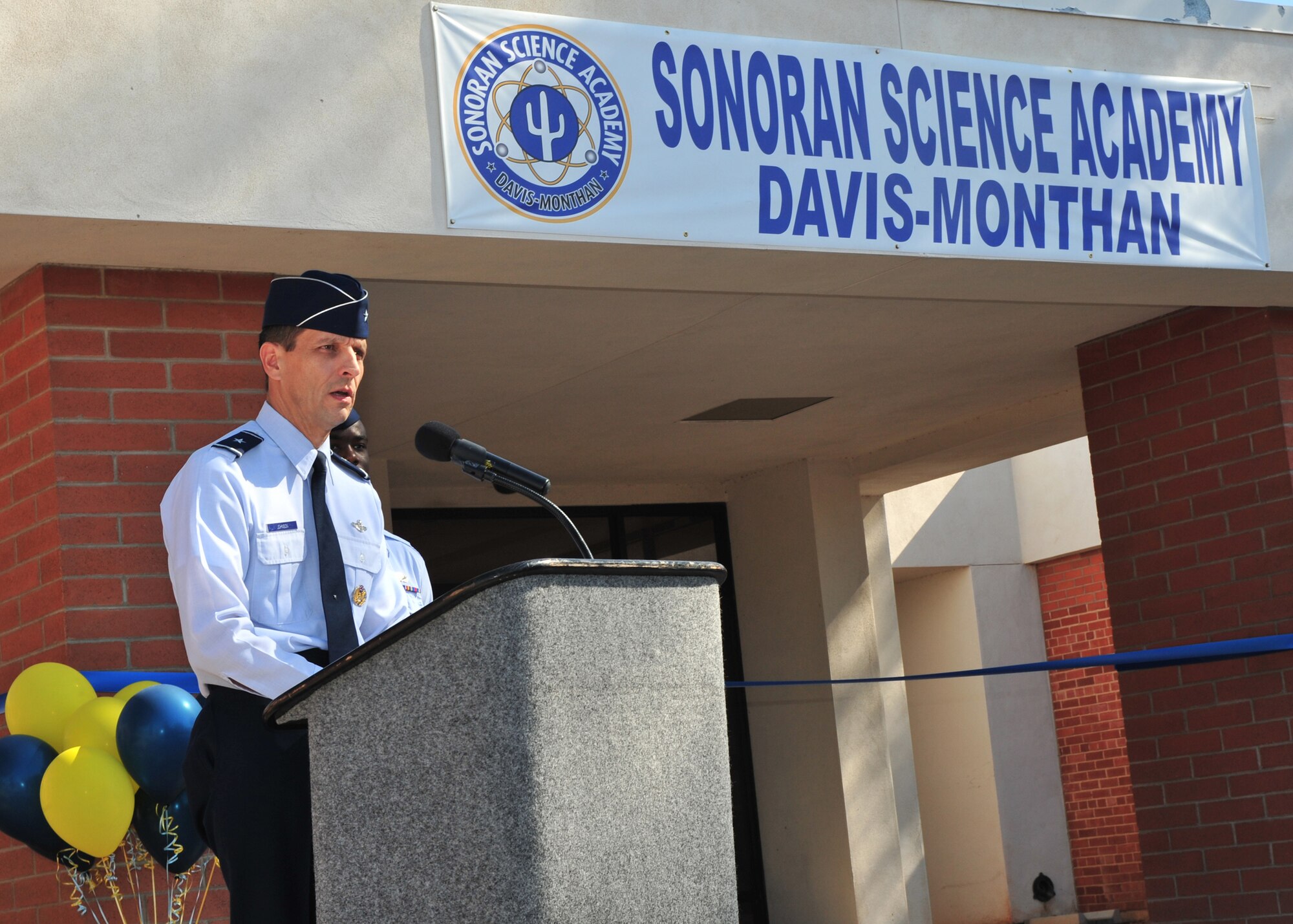
Brakpan
Visit the guide

Cape Town
Visit the guide
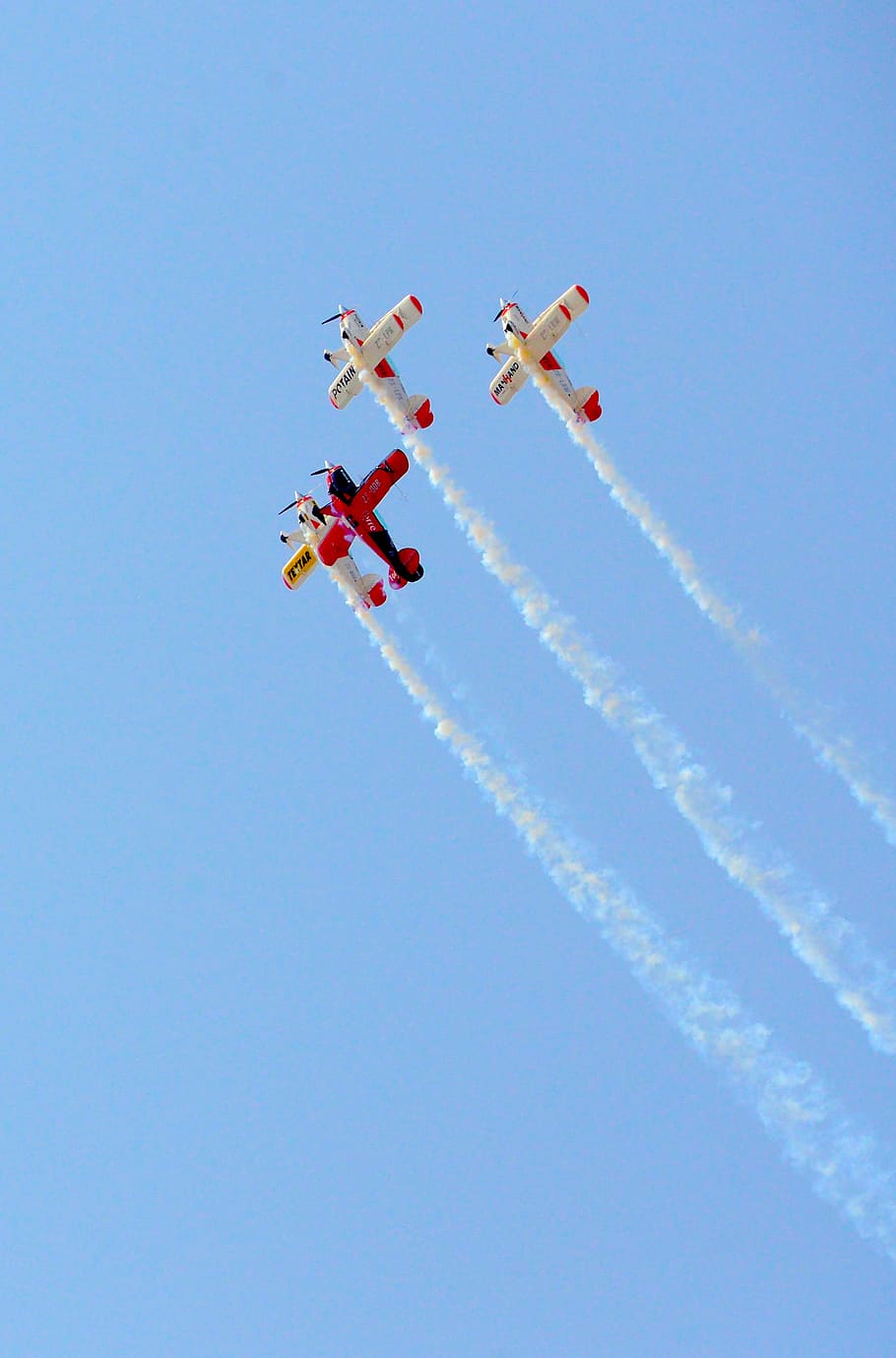
Centurion
Visit the guide

Durban
Visit the guide

East Rand
Visit the guide

Ekurhuleni
Visit the guide

Germiston
Visit the guide
Grahamstown
Visit the guide

Johannesburg
Visit the guide

Kimberley
Visit the guide

Middelburg
Visit the guide

Nelspruit
Visit the guide

Pietermaritzburg
Visit the guide
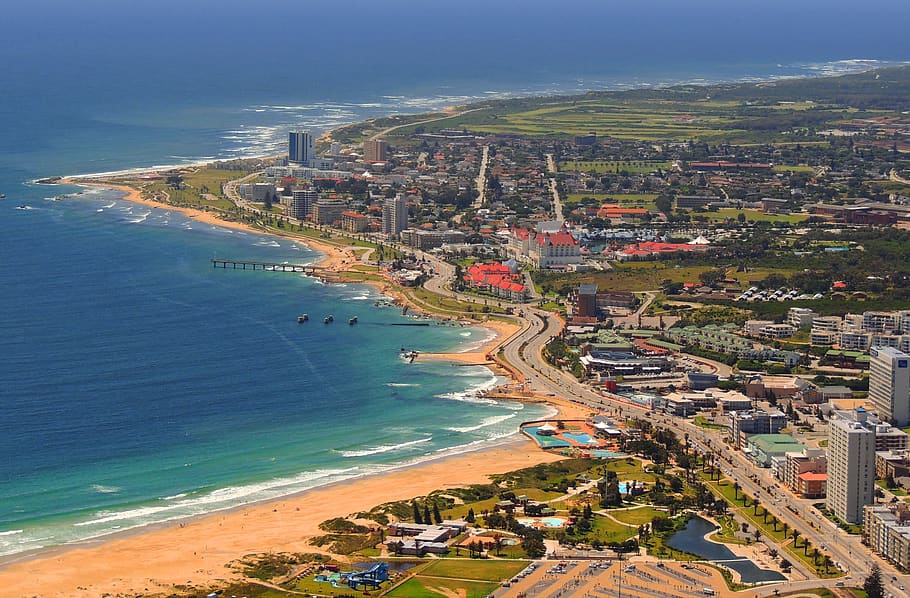
Port Elizabeth
Visit the guide
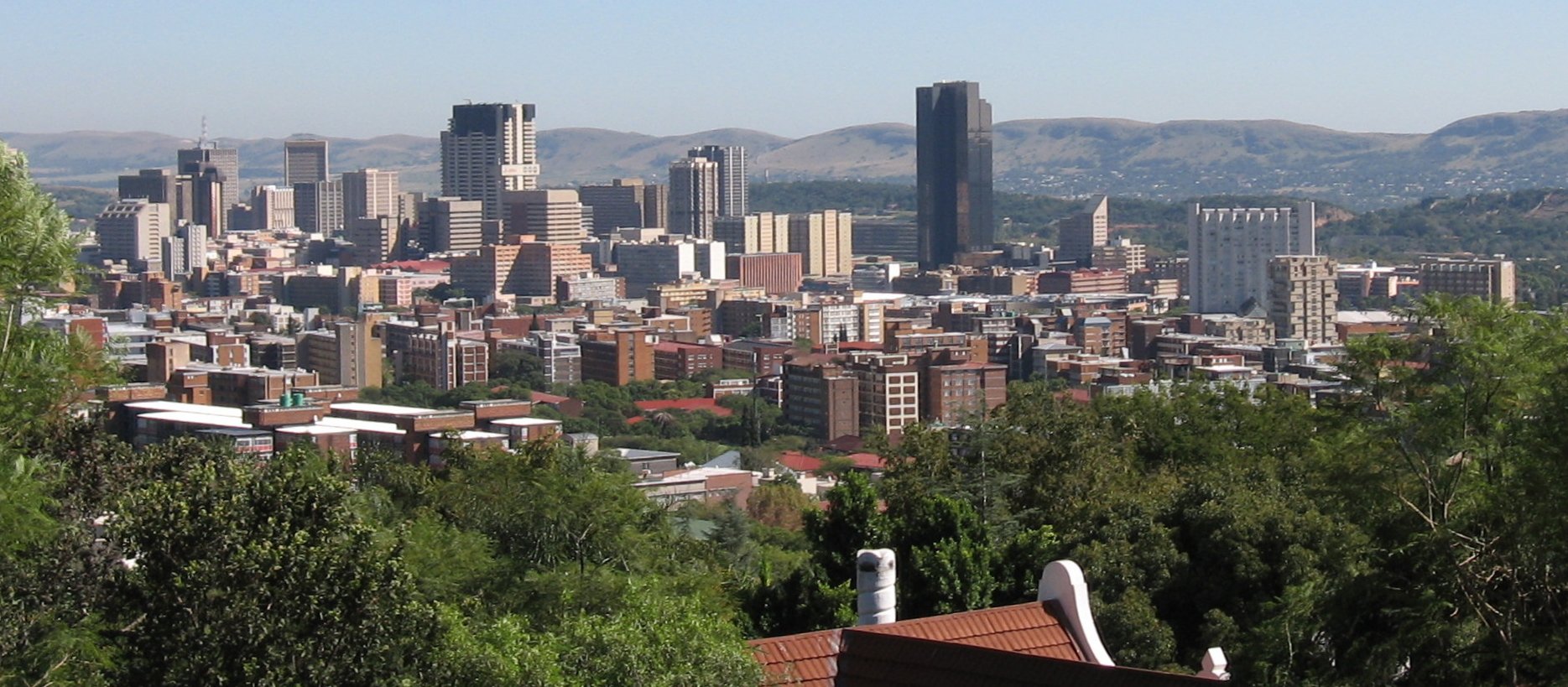
Pretoria
Visit the guide

Queenstown
Visit the guide

Richards Bay
Visit the guide
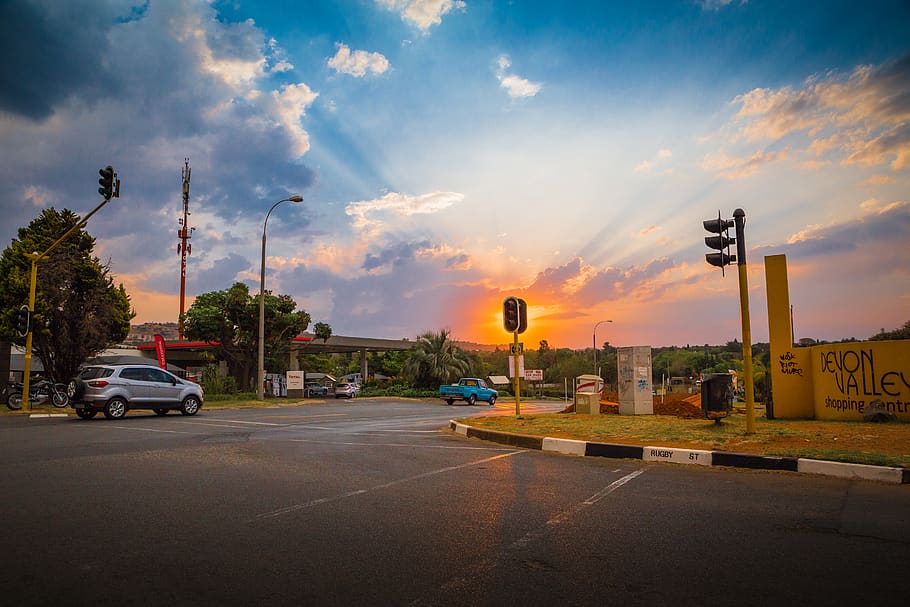
Roodepoort
Visit the guide

Soweto
Visit the guide

Tembisa
Visit the guide
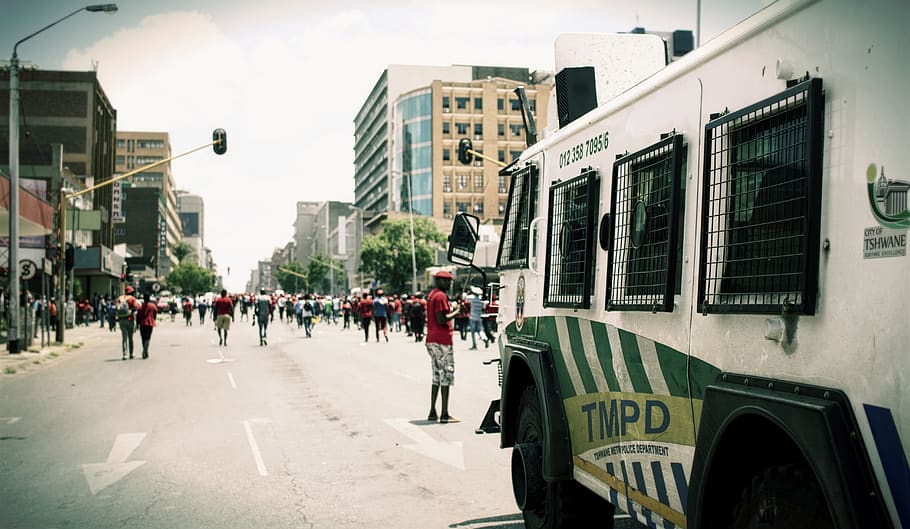
Tshwane
Visit the guide

Umlazi
Visit the guide

Vanderbijlpark
Visit the guide

Vryheid
Visit the guide

Welkom
Visit the guide

Westonaria
Visit the guide

Witbank
Visit the guide
festivites
1. Freedom Day - celebrated on April 27th each year to commemorate the country's first non-racial democratic elections in 1994 and the end of apartheid. It is a public holiday where people celebrate by attending political rallies, cultural festivals, and music concerts.
2. Heritage Day - celebrated on September 24th each year to recognize and celebrate the cultural heritage and diversity of South Africa. On this day, people dress up in traditional attire, attend local cultural events, and eat traditional foods.
3. Youth Day - celebrated on June 16th each year to commemorate the Soweto Uprising in 1976, when thousands of black students protested against the apartheid government's policy of forcing them to study in Afrikaans. It is a public holiday where young people take part in marches, speeches, and youth-oriented events.
4. Christmas Day - celebrated on December 25th each year as a Christian holiday. Families attend church services and share gifts, festive food, and spend time together.
5. Easter - celebrated on various dates in March or April as a Christian holiday commemorating the crucifixion and resurrection of Jesus Christ. It is a time for families to attend church services, share meals, and exchange gifts.
6. Workers' Day - celebrated on May 1st each year to honor workers and their contributions to society. It is a public holiday where people participate in rallies, marches, and other labor-related activities.
These are just a few examples of the many holidays and festivities celebrated in South Africa. Each celebration reflects the country's diverse cultural, religious, and historical traditions.
seasons
The tourist seasons in South Africa can be categorized as follows:
1. Peak season: December - January
Recommendation: Book accommodations and activities well in advance, expect crowded tourist attractions and higher prices.
2. High season: February - April and September - November
Recommendation: Book accommodations in advance, expect moderate crowds and prices.
3. Low season: May - August
Recommendation: Fewer crowds, lower prices, but some attractions may have reduced hours or close entirely during this period due to colder weather.
It's worth noting that the weather and tourist activity levels can vary depending on the specific regions of South Africa you plan to visit.
visa
Here are some special visa rules for citizens of certain countries who want to visit South Africa:
1. Visa-free entry: Citizens of some countries (such as the United States, Canada, and many EU countries) do not need a visa for stays of up to 90 days.
2. Visa-on-arrival: Citizens of certain African countries can obtain a visa on arrival in South Africa, which costs around USD $44 (as of September 2021).
3. Visitor's visa: Citizens of other countries may need to obtain a visitor's visa before traveling to South Africa. The cost of a visitor's visa varies depending on the duration of the stay, but it is generally around USD $36 (as of September 2021).
4. Transit visa: If you are transiting through South Africa to another country, you may need a transit visa. The cost of a transit visa is around USD $15 (as of September 2021).
It is important to note that visa regulations and costs can change frequently, so it is recommended to check with the relevant embassy or consulate for the most up-to-date information.
souvenirs
1. African Art: prices vary widely depending on the piece, but expect to pay anywhere from $20 to several hundred dollars. You can find art markets in many cities, including Cape Town and Johannesburg.
2. Rooibos Tea: a 40-pack of tea bags costs around $5. Look for it at supermarkets or specialty shops.
3. Biltong and Droewors: dried meat snacks that cost around $15 per kilogram. You can find them at any grocery store or specialty shop.
4. Zulu Beadwork: prices vary depending on the item, but a beaded necklace or bracelet typically costs about $10 to $20. Look for it at craft markets or souvenir shops.
5. Wooden Carvings: a small wooden animal carving costs around $10. You can find them at craft markets or souvenir shops.
6. Wine: prices vary depending on the brand, but you can find great bottles for around $10 to $20. Visit a winery or look for it at a liquor store.
7. Apartheid Museum Book: "A Long Walk to Freedom" by Nelson Mandela is available for around $20 at bookstores or souvenir shops.
8. African Tribal Masks: prices vary widely depending on the quality and size, but expect to pay anywhere from $20 to several hundred dollars. You can find them at craft markets or souvenir shops.
Note that prices are approximate and may vary depending on location and currency exchange rates.
If you have 1 week
Oh, the beautiful South Africa! There's so much to see and do in this amazing country that it's hard to pick just a few places to visit. But don't worry, I'll do my best to create an exciting itinerary for you!
Day 1: Start your journey by exploring the stunning city of Cape Town. Take a cable car ride up Table Mountain for the most breathtaking views of the city and its surroundings. Then, visit the V&A Waterfront for some shopping and a delicious seafood meal at one of the many restaurants overlooking the harbor.
Day 2: Head out to the Cape Winelands region for a day of wine tasting and sightseeing. Visit the historic town of Stellenbosch and its many wine estates, such as Spier, Tokara, or Delaire Graff, where you can sample some of the finest wines in the world while taking in the beautiful scenery of vineyards and mountains.
Day 3: Time to hit the beach! Drive along the Garden Route to the charming coastal town of Knysna, where you can explore the famous Knysna Heads and take a ferry to the Featherbed Nature Reserve. Relax on the pristine beaches of Plettenberg Bay and catch a glimpse of dolphins and whales in the ocean.
Day 4: Embark on a safari adventure in the Kruger National Park, one of the largest game reserves in Africa. Marvel at the sight of lions, elephants, giraffes, zebras, and many other animals in their natural habitats. Stay overnight in one of the park's lodges for a unique African experience.
Day 5: Visit the quaint town of Franschhoek, known as the "food and wine capital" of South Africa. Indulge in some gourmet cuisine at one of the town's many award-winning restaurants, such as La Petite Ferme, Le Quartier Français, or The Tasting Room at Le Quartier Français.
Day 6: Explore the vibrant city of Johannesburg and its rich history. Visit the Apartheid Museum for a sobering look at South Africa's past, and then head to the trendy neighborhoods of Maboneng and Braamfontein for some street art, shopping, and nightlife.
Day 7: End your trip on a high note by visiting the majestic Victoria Falls, one of the Seven Natural Wonders of the World. Take a helicopter ride over the falls for a bird's-eye view of this spectacular sight, and then relax in one of the luxurious hotels overlooking the Zambezi River.
I hope you enjoy this itinerary and have an unforgettable week exploring the wonders of South Africa!
If you have 2 weeks
It's wonderful to hear that you're in South Africa! There are so many beautiful and exciting places to visit in your region, and I would be thrilled to help you plan a two-week itinerary.
First off, I recommend visiting Cape Town, which is widely considered one of the most beautiful cities in the world. You should definitely climb Table Mountain for an amazing view of the city, then take a trip down to the V&A Waterfront for some shopping and dining. The Kirstenbosch National Botanical Gardens is also a must-see attraction, with its sprawling gardens and beautiful fynbos flowers.
After Cape Town, I suggest heading east to the stunning Garden Route, which stretches along the southern coast of South Africa. This scenic drive will take you through quaint towns like Knysna and Plettenberg Bay, where you can stop off at pristine beaches for swimming and sunbathing. Be sure to visit the Cango Caves outside the town of Oudtshoorn, where you can take a guided tour of awe-inspiring limestone formations.
Next, you should travel up to Johannesburg to experience the vibrant energy of this bustling metropolis. Visit the Apartheid Museum to learn about South Africa's difficult history, then head over to the nearby Gold Reef City theme park for some fun rides and attractions. If you're interested in wildlife, be sure to make a stop at the Johannesburg Zoo or the Lion Park to see exotic animals up close.
Finally, end your trip with a visit to the Kruger National Park, one of the largest game reserves in Africa. Here, you can go on a thrilling safari adventure and spot animals such as lions, elephants, rhinos, and zebras in their natural habitat.
Overall, these destinations offer a diverse range of experiences, from the beauty of Cape Town and the Garden Route to the excitement of Johannesburg and the wonder of the Kruger National Park. I hope you have an incredible trip!
Culture
The South African black majority still has a substantial number of rural inhabitants who lead largely impoverished lives. It is among these people that cultural traditions survive most strongly; as blacks have become increasingly urbanised and Westernised, aspects of traditional culture have declined. Members of the middle class, who are predominantly white but whose ranks include growing numbers of Black, Coloured and Indian people, have lifestyles similar in many respects to that of people found in Western Europe, North America and Australasia.
South African art includes the oldest art objects in the world, which were discovered in a South African cave and dated from roughly 75,000 years ago. The scattered tribes of the Khoisan peoples moving into South Africa from around 10,000 BC had their own fluent art styles seen today in a multitude of cave paintings. They were superseded by the Bantu/Nguni peoples with their own vocabularies of art forms. Forms of art evolved in the mines and townships: a dynamic art using everything from plastic strips to bicycle spokes. The Dutch-influenced folk art of the Afrikaner trekboers and the urban white artists, earnestly following changing European traditions from the 1850s onwards, also contributed to this eclectic mix which continues to evolve to this day.
The South African media sector is large, and South Africa is one of Africa's major media centres. While the many broadcasters and publications reflect the diversity of the population as a whole, the most commonly used language is English. However, all ten other official languages are represented to some extent or another.
There is great diversity in South African music. Black musicians have developed unique styles called Kwaito and Amapiano, that is said to have taken over radio, television, and magazines. Of note is Brenda Fassie, who launched to fame with her song "Weekend Special", which was sung in English. More famous traditional musicians include Ladysmith Black Mambazo, while the Soweto String Quartet performs classical music with an African flavour. South Africa has produced world-famous jazz musicians, notably Hugh Masekela, Jonas Gwangwa, Abdullah Ibrahim, Miriam Makeba, Jonathan Butler, Chris McGregor, and Sathima Bea Benjamin. Afrikaans music covers multiple genres, such as the contemporary Steve Hofmeyr, the punk rock band Fokofpolisiekar, and the singer-songwriter Jeremy Loops. South African popular musicians that have found international success include Manfred Mann, Johnny Clegg, rap-rave duo Die Antwoord, rock band Seether and rappers such as AKA, Nasty C and Cassper Nyovest gained notoriety in other avenues like the BET Awards for best African acts.
Although few South African film productions are known outside South Africa, many foreign films have been produced about South Africa. Arguably, the most high-profile film portraying South Africa in recent years was District 9 and its upcoming sequel. Other notable exceptions are the film Tsotsi, which won the Academy Award for Foreign Language Film at the 78th Academy Awards in 2006, as well as U-Carmen e-Khayelitsha, which won the Golden Bear at the 2005 Berlin International Film Festival. In 2015, the Oliver Hermanus film The Endless River became the first South African film selected for the Venice Film Festival.
South African literature emerged from a unique social and political history. One of the first well known novels written by a black author in an African language was Solomon Thekiso Plaatje's Mhudi, written in 1930. During the 1950s, Drum magazine became a hotbed of political satire, fiction, and essays, giving a voice to the urban black culture.
Notable white South African authors include Alan Paton, who published the novel Cry, the Beloved Country in 1948. Nadine Gordimer became the first South African to be awarded the Nobel Prize in Literature, in 1991. J.M. Coetzee won the Nobel Prize in Literature in 2003. When awarding the prize, the Swedish Academy stated that Coetzee "in innumerable guises portrays the surprising involvement of the outsider."
The plays of Athol Fugard have been regularly premiered in fringe theatres in South Africa, London (Royal Court Theatre) and New York. Olive Schreiner's The Story of an African Farm (1883) was a revelation in Victorian literature: it is heralded by many as introducing feminism into the novel form.
Breyten Breytenbach was jailed for his involvement with the guerrilla movement against apartheid. André Brink was the first Afrikaner writer to be banned by the government after he released the novel A Dry White Season.
The cuisine of South Africa is diverse, and foods from many different cultures and backgrounds are enjoyed by all communities, and especially marketed to tourists who wish to sample the large variety available. The cuisine is mostly meat-based and has spawned the distinctively South African social gathering known as the braai, a variation of the barbecue. South Africa has also developed into a major wine producer, with some of the best vineyards lying in valleys around Stellenbosch, Franschhoek, Paarl and Barrydale.
South Africa's most popular sports are association football, rugby union and cricket. Other sports with significant support are swimming, athletics, golf, boxing, tennis, rugby league, ringball, field hockey, surfing and netball. Although football (soccer) commands the greatest following among the youth, other sports like basketball, judo, softball and skateboarding are becoming increasingly popular amongst the populace.
Association football is the most popular sport in South Africa. Footballers who have played for major foreign clubs include Steven Pienaar, Lucas Radebe, Philemon Masinga, Benni McCarthy, Aaron Mokoena, and Delron Buckley. South Africa hosted the 2010 FIFA World Cup, and FIFA president Sepp Blatter awarded South Africa a grade 9 out of 10 for successfully hosting the event. Player Benni McCarthy is also a first-team coach for the English football club Manchester United.
Famous combat sport personalities include Baby Jake Jacob Matlala, Vuyani Bungu, Welcome Ncita, Dingaan Thobela, Corrie Sanders, Gerrie Coetzee, Brian Mitchell and Dricus du Plessis. Durban surfer Jordy Smith won the 2010 Billabong J-Bay Open making him the highest ranked surfer in the world. South Africa produced Formula One motor racing's 1979 world champion Jody Scheckter. Famous active cricket players include Kagiso Rabada, David Miller, Keshav Maharaj, Anrich Nortje, Reeza Hendricks and Faf du Plessis; most also participate in the Indian Premier League.
South Africa has produced numerous world class rugby players, including Francois Pienaar, Joost van der Westhuizen, Danie Craven, Frik du Preez, Naas Botha, Bryan Habana, Eben Etzebeth, Cheslin Kolbe and Siya Kolisi. South Africa has won the Rugby World Cup three times, tying New Zealand for the most Rugby World Cup wins. South Africa first won the 1995 Rugby World Cup, which it hosted. They went on to win the tournament again in 2007 and in 2019. It followed the 1995 Rugby World Cup by hosting the 1996 African Cup of Nations, with the national team Bafana Bafana going on to win the tournament. In 2022, the women's team also won the Women's Africa Cup of Nations, beating Morocco 2–1 in the final. It also hosted the 2003 Cricket World Cup, the 2007 World Twenty20 Championship. South Africa's national cricket team, the Proteas, have also won the inaugural edition of the 1998 ICC KnockOut Trophy by defeating West Indies in the final. The 2023 ICC Women's T20 World Cup was hosted in South Africa and the women's team came in second place. South Africa's national blind cricket team also went on to win the inaugural edition of the Blind Cricket World Cup in 1998.
In 2004, the swimming team of Roland Schoeman, Lyndon Ferns, Darian Townsend and Ryk Neethling won the gold medal at the Olympic Games in Athens, simultaneously breaking the world record in the 4×100 Freestyle Relay. Penny Heyns won Olympic Gold in the 1996 Atlanta Olympic Games, and more recently, swimmers Tatjana Schoenmaker and Lara van Niekerk have both broken world records and won gold medals at the Olympic and Commonwealth Games. In 2012, Oscar Pistorius became the first double amputee sprinter to compete at the Olympic Games in London. In golf, Gary Player is generally regarded as one of the greatest golfers of all time, having won the Career Grand Slam, one of five golfers to have done so. Other South African golfers to have won major tournaments include Bobby Locke, Ernie Els, Retief Goosen, Tim Clark, Trevor Immelman, Louis Oosthuizen and Charl Schwartzel.
Religion
According to the 2001 census, Christians accounted for 79.8% of the population, with a majority of them being members of various Protestant denominations (broadly defined to include syncretic African-initiated churches) and a minority of Roman Catholics and other Christians. Christian category includes Zion Christian (11.1%), Pentecostal (Charismatic) (8.2%), Roman Catholic (7.1%), Methodist (6.8%), Dutch Reformed (6.7%), and Anglican (3.8%). Members of remaining Christian churches accounted for another 36% of the population. Muslims accounted for 1.5% of the population, Hindus 1.2%, traditional African religions 0.3% and Judaism 0.2%. 15.1% had no religious affiliation, 0.6% were "other" and 1.4% were "unspecified."
African-initiated churches formed the largest of the Christian groups. It was believed that many of the persons who claimed no affiliation with any organised religion adhered to a traditional African religion. There are an estimated 200,000 traditional healers, and up to 60% of South Africans consult these healers, generally called sangoma ('diviner') or inyanga ('herbalist'). These healers use a combination of ancestral spiritual beliefs and a belief in the spiritual and medicinal properties of local fauna, flora, and funga commonly known as muti ('medicine'), to facilitate healing in clients. Many peoples have syncretic religious practices combining Christian and indigenous influences.
South African Muslims comprise mainly Coloureds and Indians. They have been joined by black or white South African converts as well as those from other parts of Africa. South African Muslims describe their faith as the fastest-growing religion of conversion in the country, with the number of black Muslims growing sixfold, from 12,000 in 1991 to 74,700 in 2004.
There is a substantial Jewish population, descended from European Jews who arrived as a minority among other European settlers. This population peaked in the 1970s at 120,000, though only around 67,000 remain today, the rest having emigrated, mostly to Israel. Even so, these numbers make the Jewish community in South Africa the twelfth largest in the world.
Demographics
[[File:South Africa 2011 population density map (hex cells).svg|thumb|Map of population density in South Africa
]]
South Africa is a nation of about 60 million (as of 2021) people of diverse origins, cultures, languages, and religions. The last census was held in 2011, with estimates produced on an annual basis. South Africa is home to an estimated five million illegal immigrants, including some three million Zimbabweans. A series of anti-immigrant riots occurred beginning in May 2008.
Statistics South Africa asks people to describe themselves in the census in terms of five racial population groups. The 2011 census figures for these groups were: Black African at 79.2%, White at 8.9%, Coloured at 8.9%, Indian or Asian at 2.5%, and Other/Unspecified at 0.5%. The first census in 1911 showed that whites made up 22% of the population; this had declined to 16% by 1980.
South Africa hosts a sizeable refugee and asylum seeker population. According to the World Refugee Survey 2008, published by the U.S. Committee for Refugees and Immigrants, this population numbered approximately 144,700 in 2007. Groups of refugees and asylum seekers numbering over 10,000 included people from Zimbabwe (48,400), the DRC (24,800), and Somalia (12,900). These populations mainly lived in Johannesburg, Pretoria, Durban, Cape Town, and Port Elizabeth.
[[File:South Africa 2011 dominant language map (hex cells).svg|right|thumb|Map showing the dominant South African languages by area
{{legend|#80b1d3|Zulu (22.7%)}}
{{legend|#fb8072|Xhosa (16.0%)}}
{{legend|#8dd3c7|Afrikaans (13.5%)}}
{{legend|#ffffb3|English (9.6%)}}
{{legend|#fdb462|Pedi (9.1%)}}
{{legend|#fccde5|Tswana (8.0%)}}
{{legend|#b3de69|Southern Sotho (7.6%)}}
{{legend|#ffed6f|Tsonga (4.5%)}}
{{legend|#bc80bd|Swazi (2.5%)}}
{{legend|#ccebc5|Venda (2.4%)}}
{{legend|#bebada|Southern Ndebele (2.1%)}}
{{legend|#d0d0d0|None dominant}}
{{legend|#ffffff|Areas of little or no population}}]]
South Africa has 11 official languages: Zulu, Xhosa, Afrikaans, English, Pedi, Tswana, Southern Sotho, Tsonga, Swazi, Venda, and Southern Ndebele (in order of first language speakers). In this regard it is fourth only to Bolivia, India, and Zimbabwe in number. While all the languages are formally equal, some languages are spoken more than others. According to the 2011 census, the three most spoken first languages are Zulu (22.7%), Xhosa (16.0%), and Afrikaans (13.5%). Although English is recognised as the language of commerce and science, it is only the fourth most common home language, that of only 9.6% of South Africans in 2011; nevertheless, it has become the de facto lingua franca of the nation. Estimates based on the 1991 census suggest just under half of South Africans can speak English. It is the second most commonly spoken language outside of the household, after Zulu.
Numerous other languages are spoken, or were widely used previously, including Fanagalo, Khoe, Lobedu, Nama, Northern Ndebele, Phuthi, and South African Sign Language. These unofficial languages may be used in certain official uses in limited areas where it has been determined that these languages are prevalent. Many of the unofficial languages of the San and Khoekhoe peoples contain regional dialects stretching northwards into Namibia and Botswana, and elsewhere. These people, who are a physically distinct population from the Bantu people who make up most of the Black Africans in South Africa, have their own cultural identity based on their hunter-gatherer societies. They have been marginalised to a great extent, and the remainder of their languages are in danger of becoming extinct.
White South Africans may also speak European languages, including Italian, Portuguese (also spoken by black Angolans and Mozambicans), Dutch, German, and Greek, while some Indian South Africans and more recent migrants from South Asia speak Indian languages, such as Gujarati, Hindi, Tamil, Telugu, and Urdu. French is spoken by migrants from Francophone Africa.
According to the 2001 census, Christians accounted for 79.8% of the population, with a majority of them being members of various Protestant denominations (broadly defined to include syncretic African-initiated churches) and a minority of Roman Catholics and other Christians. Christian category includes Zion Christian (11.1%), Pentecostal (Charismatic) (8.2%), Roman Catholic (7.1%), Methodist (6.8%), Dutch Reformed (6.7%), and Anglican (3.8%). Members of remaining Christian churches accounted for another 36% of the population. Muslims accounted for 1.5% of the population, Hindus 1.2%, traditional African religions 0.3% and Judaism 0.2%. 15.1% had no religious affiliation, 0.6% were "other" and 1.4% were "unspecified."
African-initiated churches formed the largest of the Christian groups. It was believed that many of the persons who claimed no affiliation with any organised religion adhered to a traditional African religion. There are an estimated 200,000 traditional healers, and up to 60% of South Africans consult these healers, generally called sangoma ('diviner') or inyanga ('herbalist'). These healers use a combination of ancestral spiritual beliefs and a belief in the spiritual and medicinal properties of local fauna, flora, and funga commonly known as muti ('medicine'), to facilitate healing in clients. Many peoples have syncretic religious practices combining Christian and indigenous influences.
South African Muslims comprise mainly Coloureds and Indians. They have been joined by black or white South African converts as well as those from other parts of Africa. South African Muslims describe their faith as the fastest-growing religion of conversion in the country, with the number of black Muslims growing sixfold, from 12,000 in 1991 to 74,700 in 2004.
There is a substantial Jewish population, descended from European Jews who arrived as a minority among other European settlers. This population peaked in the 1970s at 120,000, though only around 67,000 remain today, the rest having emigrated, mostly to Israel. Even so, these numbers make the Jewish community in South Africa the twelfth largest in the world.
The adult literacy rate in 2007 was 88.7%. South Africa has a three-tier system of education starting with primary school, followed by high school, and tertiary education in the form of (academic) universities and universities of technology. Learners have twelve years of formal schooling, from grade 1 to 12. Grade R, or grade 0, is a pre-primary foundation year. Primary schools span the first seven years of schooling. High school education spans a further five years. The National Senior Certificate examination takes place at the end of grade 12 and is necessary for tertiary studies at a South African university. Public universities are divided into three types: traditional universities, which offer theoretically oriented university degrees; universities of technology (formerly called technikons), which offer vocationally-oriented diplomas and degrees; and comprehensive universities, which offer both types of qualification. There are 23 public universities in South Africa: 11 traditional universities, 6 universities of technology, and 6 comprehensive universities.
Under apartheid, schools for black people were subject to discrimination through inadequate funding and a separate syllabus called Bantu Education which only taught skills sufficient to work as labourers.
In 2004, South Africa started reforming its tertiary education system, merging and incorporating small universities into larger institutions, and renaming all tertiary education institutions "university". By 2015, 1.4 million students in higher education have been aided by a financial aid scheme which was promulgated in 1999.
According to the South African Institute of Race Relations, the life expectancy in 2009 was 71 years for a white South African and 48 years for a black South African. The healthcare spending in the country is about 9% of GDP. About 84% of the population depends on the public healthcare system, which is beset with chronic human resource shortages and limited resources. About 20% of the population use private healthcare. Only 16% of the population are covered by medical aid schemes; the rest pay for private care out-of-pocket or through in-hospital-only plans. The three dominant hospital groups, Mediclinic, Life Healthcare and Netcare, together control 75% of the private hospital market.
According to the 2015 UNAIDS medical report, South Africa has an estimated seven million people who are living with HIV – more than any other country in the world. In 2018, HIV prevalence—the percentage of people living with HIV—among adults (15–49 years) was 20.4%, and in the same year 71,000 people died from an AIDS-related illness.
A 2008 study revealed that HIV/AIDS infection is distinctly divided along racial lines: 13.6% of blacks are HIV-positive, whereas only 0.3% of whites have the virus. Most deaths are experienced by economically active individuals, resulting in many AIDS orphans who in many cases depend on the state for care and financial support. It is estimated that there are 1,200,000 orphans in South Africa.
The link between HIV, a virus spread primarily by sexual contact, and AIDS was long denied by President Thabo Mbeki and his health minister Manto Tshabalala-Msimang, who insisted that the many deaths in the country are caused by malnutrition, and hence poverty, and not HIV. In 2007, in response to international pressure, the government made efforts to fight AIDS. After the 2009 general elections, President Jacob Zuma appointed Aaron Motsoaledi as the health minister and committed his government to increasing funding for and widening the scope of HIV treatment, and by 2015, South Africa had made significant progress, with the widespread availability of antiretroviral drugs resulted in an increase in life expectancy from 52.1 years to 62.5 years.
One online database lists South Africa having more than 12,600 cities and towns. The following are the largest cities and towns in South Africa.
Cities:

